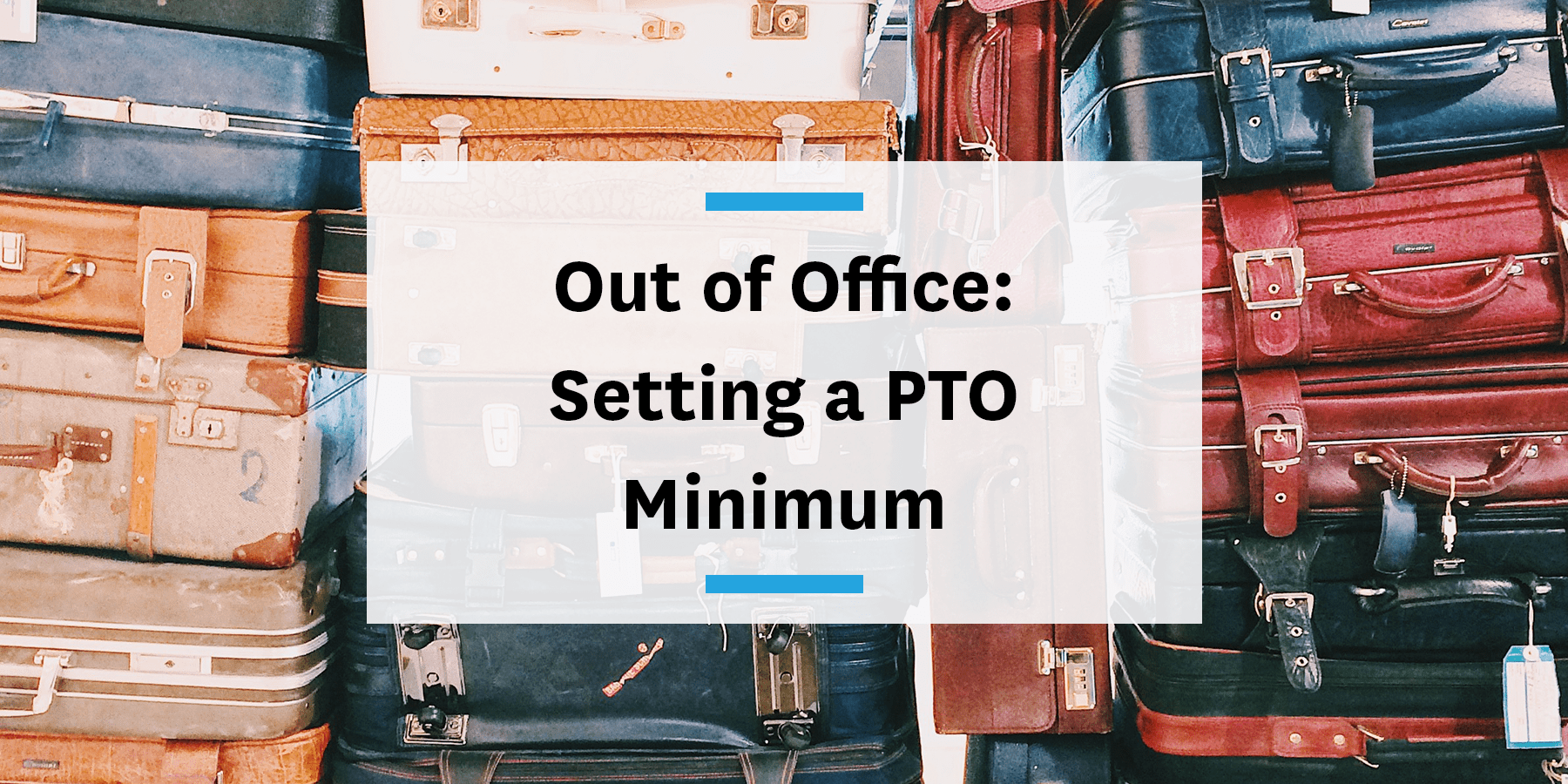With the rise of startup culture, unlimited PTO is becoming a popular perk included in HR benefit packages. Some express concerns about employees taking advantage of this freedom and taking too much time off, leaving everyone to pick up the slack. In reality, the opposite has happened: Employees have started taking less time away from the office.

Employees who have unlimited PTO take 13 days off work per year on average. Employees who have a specific number of days, on the other hand, take an average of 15 days off of work per year. As a result, employees don’t take enough time to destress and reset. That’s why employers need to make new rules. Setting a minimum number of PTO days for employees to take can ensure they take the time to decompress – without feeling guilty about it.
Day to day
The number of minimum days you should require is largely up to employers to decide, and that’s where you can get creative. A good benchmark to work from is the 15-day average employees without unlimited PTO take. Three work weeks should be enough time off to decompress, travel, and reset in order to come back to work stronger.
Direct-to-consumer companies rely on amazing customer experiences to form lifetime customers. During the holiday season, customer service and distribution teams may not have the time to take many days off. By encouraging a quarterly minimum or an alternative PTO schedule, these teams can take their time off before and after their busy season, without worrying about falling behind on their work.
Commuting stress
One of the most significant causes of work-related stress happens outside of the office. Commuting causes twice-daily stress for employees all over the country. In fact, nearly a quarter of employees have left jobs because of their commute. What’s a better way to fight the stress of commuting than to not commute at all?
When employees take time off work, they’re not just decompressing for work, but escaping the daily stress they’ve been experiencing from their commute. Even just taking a Friday or Monday off can work wonders for an employee’s mentality and productivity. This is especially true for the 60 percent of employees who feel like their employers aren’t doing enough to help better their commutes.
Leave work behind
Setting a minimum number of days for employees is a change employers can make, but actually signing off is up to employees. We’ve seen managers and coworkers who deleted email, Slack, and work calendars from their phones to be unreachable while out of the office. This may seem extreme, but in today’s world, being disconnected is almost impossible, so you might want to consider extreme measures.
A helping hand
As an easy way to get away, stay-cations have become a popular form of escape. Getting a hotel room in your city and living outside of the day-to-day is a way to break routine while saving money.
To make an out-of-state vacation easier, starting a vacation reimbursement program can help employees take their dream vacation. BambooHR offers their employees a $2,000 travel stipend per year. This is an out-of-the-box perk, but offering perks that actually help employees – not beer kegs – not only helps with employee retention, but helps attract the talent you want as well.
Signing off
In today’s world, stress comes from so many factors that can lead to lower productivity and poor mental health. Employers need to put emphasis on work-life balance to ensure employees can perform to their expected levels. Setting a minimum number of days off can be the difference from employees burning out and having a successful tenure.




